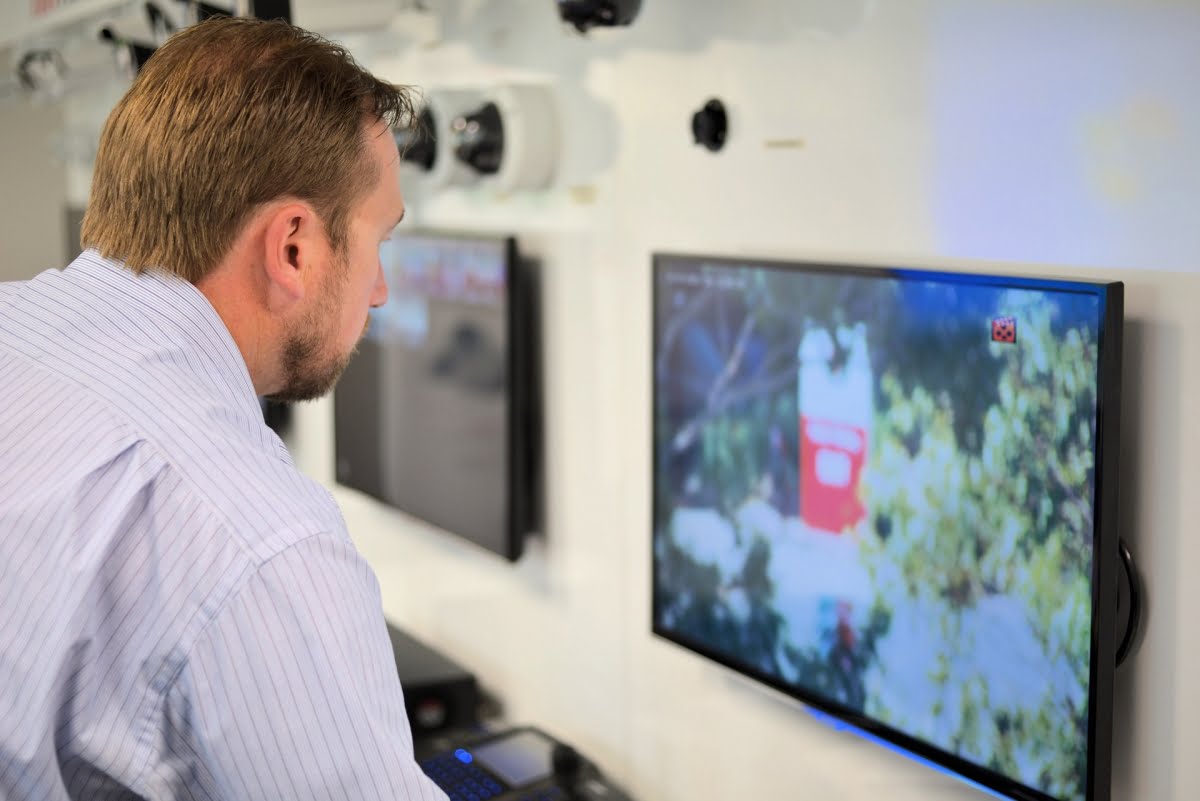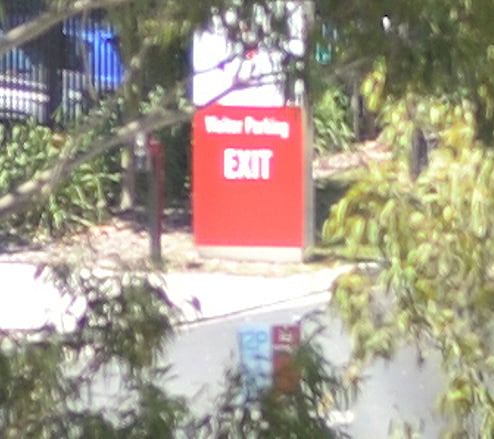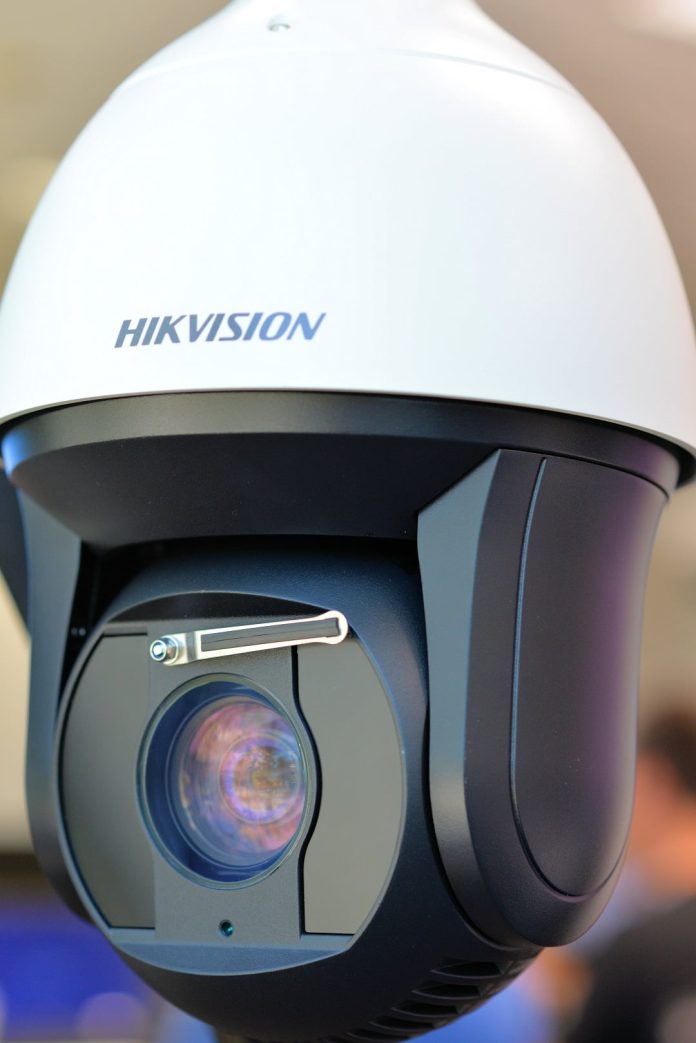Hikvision’s new 4K PTZ is a tour de force, combining all the company’s best technologies in a single camera. It melds 4K resolution with a fast F1.5 aperture 6.2-202mm (36x) optical zoom lens, integrated 200m IR, 120dB WDR, IP66 and IK10 ratings, and low light performance down to .02 lux in colour.
HIKVISION has tipped all its engineering nous into the DS-2DF8836IV-AELW 4K PTZ – this camera is just bristling with tech. I got a look at the handsome new 4096 x 2160 resolution PTZ straight out of the box, having had no fine tuning from the technical team at Hikvision Australia. It would have been great to get hold of Hikvision’s 4K PTZ and undertake a full test but just mucking around in the demo room with the first unit to arrive in the country was highly instructive.
At first sight it’s a nice looking camera with a stainless quick-release pendant mount and some light finning on the rear of the housing to act as a heat sink. It’s 266.6 x 435mm and heavily built in coated diecast aluminium. Weight is 8kg, which is typical for a camera of this type. The lens reflects purple and green light from different angles, indicating lens elements are multicoated against flare and internal reflections. I can see the 2 flush-mounted IR banks on either side of the camera head and there’s an integrated wiper.
The F1.5 aperture 6.2-202mm (36x) optical zoom lens has a viewing angle of 56.8 – 2.02 degrees. It’s an angle of view that sounds narrow when you compared it with fixed domes but it’s ideal for a camera which will be installed high and/or set back in large external industrial, commercial or public surveillance applications. Even with a 4K camera, pixel spread is going to be a factor in very big scenes – you don’t want to go too wide at the short end.
Features of the DS-2DF8836IV-AELW
Hikvision has packed this powerful unit with features. We’ve already covered resolution, 36x optical and 16x digital zoom, weather and vandal resistance and 200m of IR. There’s a 1/1.9-inch progressive scan CMOS chip which is claimed to give low light performance down to 0.02 of a lux in colour at the widest aperture of F1.5 with AGC on – that’s very low and the camera would have gone over to night mode or activated its IR array (30,000 hour MTBF) before this light level is reached if Day/Night was set to auto. Monochrome performance is down to 0.002 lux, which is more academic than operational. WDR performance is strong at 120dB. We did not get to test the camera in the dark and I think WDR was likely at default off during our brief test.
The camera supports triple streams including H.264/MJPEG video compression an H.264 encoding with Baseline/Main/High profile. There’s 128Gb storage onboard, a built in web server for remote viewing and a support for up to 8 network area storage devices. Security is handled by HTTPS encryption and IEEE 802.1X port-based network access control. There are 7 alarm inputs and 2 alarm outputs; 1 audio input and 1 audio output.

Jason Blowers drives the PTZ…
Hikvision calls this 4K PTZ smart for a reason – it includes all the company’s smart functions, including face detection, intrusion detection, line crossing detection, region entrance trigger, region exit trigger and audio exception, motion detection, dynamic analysis, tamper alarm, network loss, IP address conflict and storage exception. Smart tracking allows the PTZ to detect and follow a moving object and there’s also Smart Defog to handle fog, mist, mizzle, smog, smoke or dust in the sorts of very large applications a camera like this is going to inhabit.
There’s region of interest encoding, smart recording supporting edge recording with dual-VCA for smart search in smart NVRs. The smart image processing is supported by optical defog, HLC, smart IR and EIS, while the smart codec offers low bit rate and region of interest. There’s also 3D intelligent positioning function and 3D DNR noise reduction. You can select from 24 privacy masks in multiple colours and mosaics on polygonal areas.
The unit has 360 endless pan range and a -20 to 90-degree tilt range getting it above the horizon. Manual pan speed is 0.1 degree to 160-degrees per second, with manual tilt having a slightly lower top end speed of 120-degrees per second. Preset speed (300 presets) is 240-degrees per second and prese tilt is 200 degrees per second. There are 8 patrols, up to 32 presets per patrol and 4 patterns, with a recording time of 10 minutes per pattern. There’s also a park action which calls up PTZ movement after a period of inactivity.
Signal-to-noise ratio is 55dB, there’s the usual group of white balance selections to handle internal, external, auto, daylight, lamp and low pressure sodium vapour. IR Intensity Automatically adjusted, depending on the zoom ratio, audio in and out (G.711ulaw/G.711alaw/G.726/MP2L2/G.722/PCM) compression, RJ-45 network connection, relay output, client notification via email, upload to FTP or trigger channel.
The camera supports simultaneous live view for up to 20 users, there’s open-ended API, support for ONVIF, PSIA, CGI and Genetec, Web Browser IE 7+, Chrome 18 +, Firefox 5.0 +, Safari 5.02 +, in multiple languages, RS-485 protocols include Hikvision, Pelco-P, Pelco-D and self-adaptive. Power draw is 60W maximum and operating temperature range is superb at -40 to 65C.
Test driving the Hikvision DS-2DF8836IV-AELW
We’re running the 4K PTZ on a Hikvision DS-7716NI-I4 plug and play 16-input NVR with 160Mbps of incoming bandwidth and 256 of outgoing, with support for up to 12MP resolution recording and up to 24TB (4HDD) storage. Steering things is Hikvision’s Jason Blowers. We’re peering up the street through the off-axis tinted glass of the Hikvision demo room window.

The full scene at 24MP
Performance is very strong. Despite the high resolution, there’s no discernible latency anywhere I can see. We are reaching all the way up the hill to a gate at least 100m from the lens. It’s difficult to give an accurate sense of performance without a comparison, so I take a shot of the scene with a full frame 24MP Nikon d610 at infinity with a focal length of 100mm to give a reference point. Later in the office I’m surprised to see how much better the Hikvision looks. Matching the 200mm focal length would have been a truer comparison but the Nikon has a much higher sensor resolution. Optical zoom beats digital zoom hands-down.

DSLR camera crop of 24MP image
As soon as Blowers starts steering around the angle of view I can see that the combination of optical zoom and 4K resolution give exceptional levels of detail all the way through the scene. Performance is so strong that we have trouble with the camera grabbing focus on individual clumps of leaves in the distant foreground.

Here's the Hikvision PTZ at 36x optical zoom, still dishing up 4K…
It’s hard to beat 36x zoom on 4K – there’s enormous resolving power from the 36x zoom lens and sensor resolution is always huge. Optical zoom always allows a camera to make the most of its sensor resolution but with 4K native resolution, these monumental levels of detail are available everywhere in a scene whether you are using optical or digital zoom. Colour rendition is particularly good, too.
“This Hikvision 4K PTZ is a very nice camera,” Blowers says over his shoulder as he plunges into the scene. “As you can see here, its resolution is very strong. In this scene we are focusing on that entrance gate and at 100 metres we can clearly see there’s an iClass HID reader fitted to the gate. “Ten years ago a camera like this was unimaginable. The quality is outstanding. ♦
Fact File: Features of the Hikvision 4K series DS-2DF8836IV-AELW PTZ
* 1/1.9-inch HD CMOS sensor
* 4K 8MP(4096×2160)
* 36X Optical Zoom
* 120dB True WDR
* Smart Tracking
* Smart Detection
* 200m IR distance
* Support wiper
* Hi-PoE/24VAC power supply.











